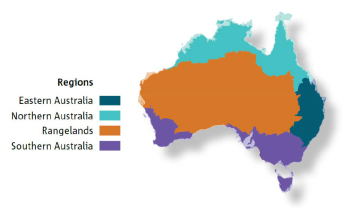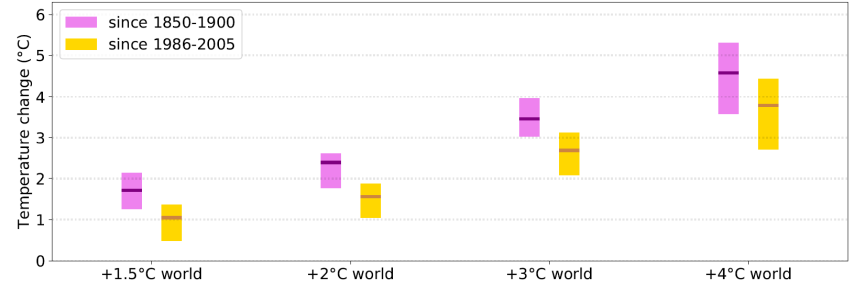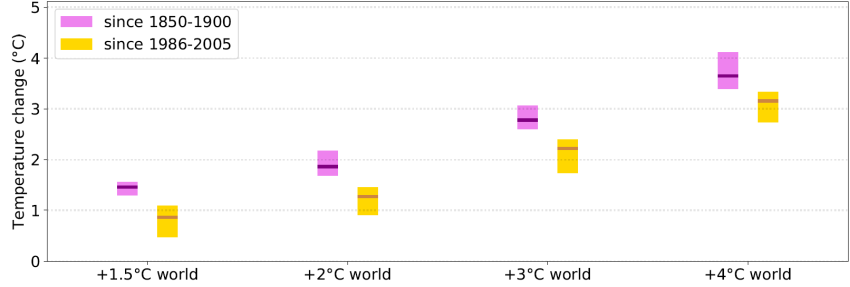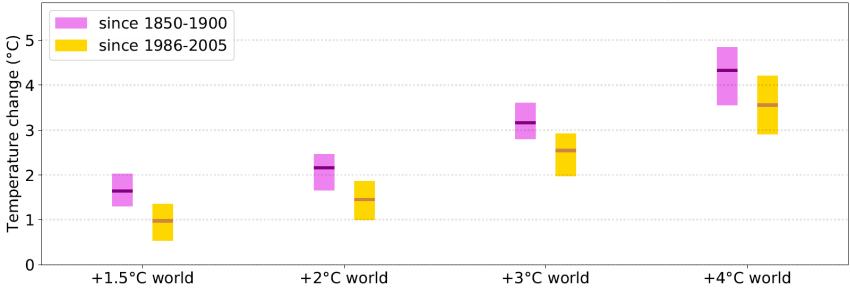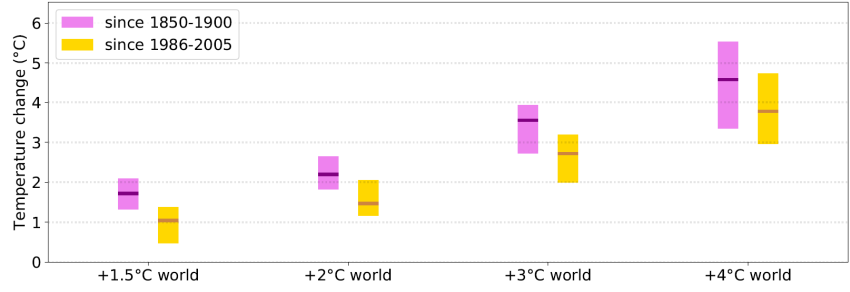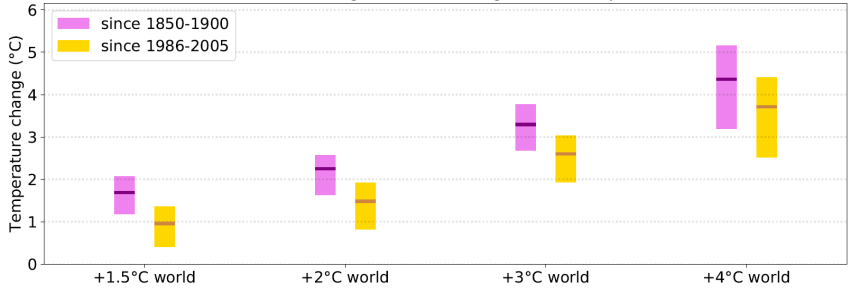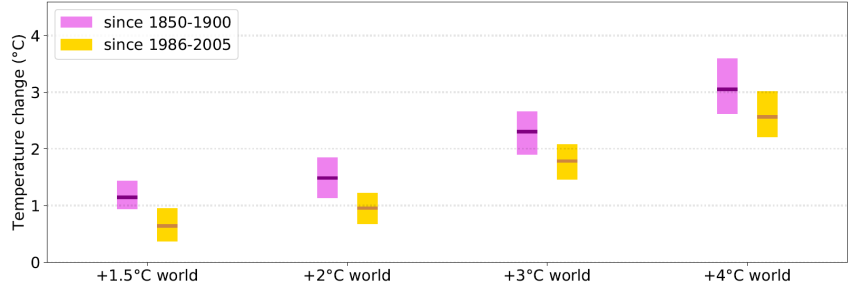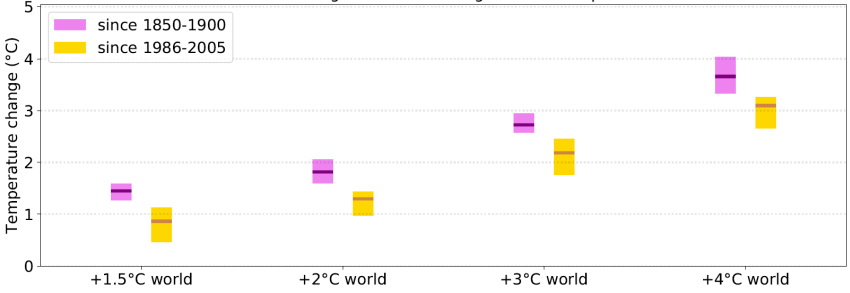Climate Change in Australia
Climate information, projections, tools and data
Temperature change
Note: reaching a global warming level means the global mean surface temperature (GMST) is steadily at or near that level relative to the early baseline 1850–1900 chosen to approximate the pre-industrial era (a baseline is a reference period to measure change from).
Global change from the pre-industrial era
Observations and climate models of historical and future change broadly agree on many features in the spatial pattern of temperature change. The central estimate projection shows:
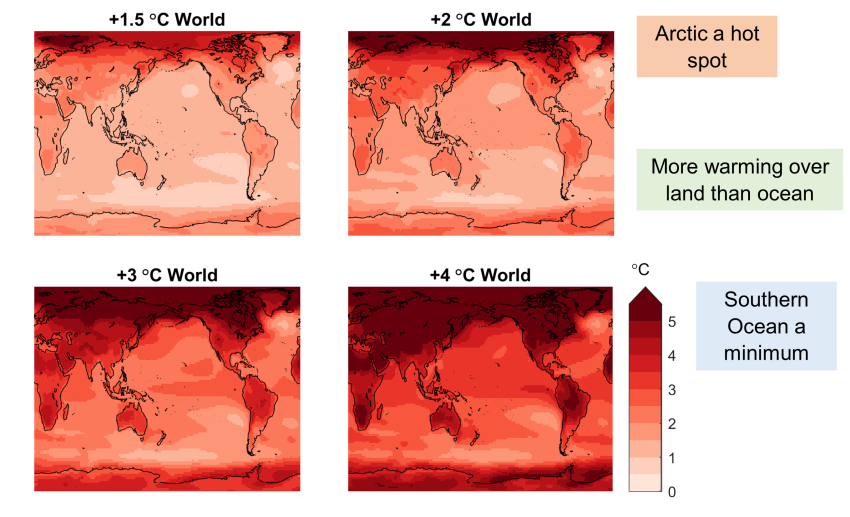
Note: Lower warming doesn't necessarily mean less or lower impacts of a changing climate. The impact of any warming amount is a function of the physical change, including the change in the average but also the change in extremes, and also the exposure and vulnerability of the relevant systems.
Taking a closer look at the +2 °C global warming level, and plotting the change with a colour scale centred on 2 °C itself, the temperature change relative to the global average change can be seen.
Note: Purple colours indicate regions warming less than the global average, NOT cooling (except in some exceptional circumstances).

Australia
Zooming in on Australia and narrowing the colour scale to show more detail, the projection from the 1850–1900 baseline to the future time when the world reaches the +2 °C warming level, the central estimate projection is:
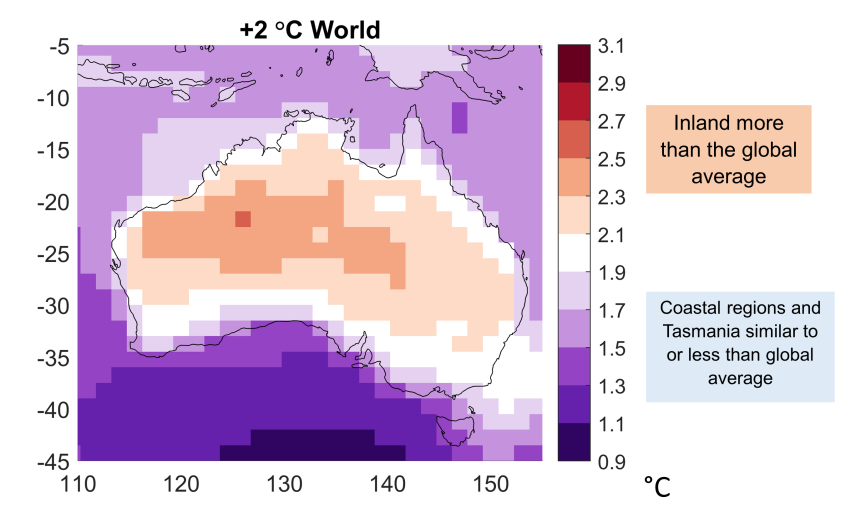
Australia has warmed by around +0.85 °C between 1850–1900 and the more recent 1986–2005 baseline that is commonly used - around 1.4x the global change of around 0.61 °C.
Similarly, the warming from 1850-1900 to 2011-2020 was around +1.6 °C for Australia, around 1.4x the global average of around +1.1 °C, see Australian Warming for more.
This historical warming before the 1986-2005 baseline is reflected in the central estimate projection from each of the two baselines to the future time when the world reaches the +2 °C warming level:

Ranges of change
The maps above show the central estimate (model average). However, there are a range of model results, which we can see in the area-average Australian temperature change shown as a bar chart:
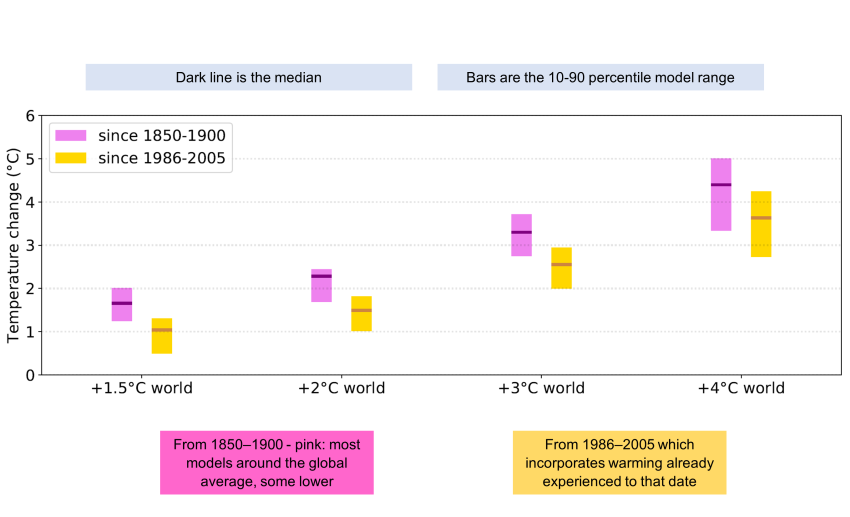
Note: Observations to date indicate Australian warming of around 1.6 °C compared to the globe of around 1.1 °C, making a ratio of around x1.4, see Australian Warming for more. Extrapolating forward, this suggests a warming in Australia of 2.1 °C when the world is at 1.5 °C. Most models produce a lower ratio than this observed ratio (the observed change is above the 10-90 percentile range but is within the 0-100 percentile model range, which includes values up to 2.4 °C).
The observed ratio to date is higher than most models for a few possible reasons:
- Climate variability in observations
- Observational uncertainties may mean the ratio is overestimated in observed datasets (e.g. observations over oceans and remote areas are sparse)
- Models tend to underestimate this ratio, or
- Some combination of these three
Presently we don't have sufficient evidence to reject models or to narrow the model projected range. There is not enough evidence to determine the most likely outcome, or to assign probabilities. A precautionary approach is to use the value from historical warming ratio in observations that is at the high end of model estimates (i.e. assume that Australia will be around +2.1 °C when the world is at +1.5 °C).
NRM Super-cluster averages
Results are presented for four key regions based on climatological boundaries: the ‘super-cluster regions’ see , (broadly consistent with IPCC ‘reference regions’ see , new window):
